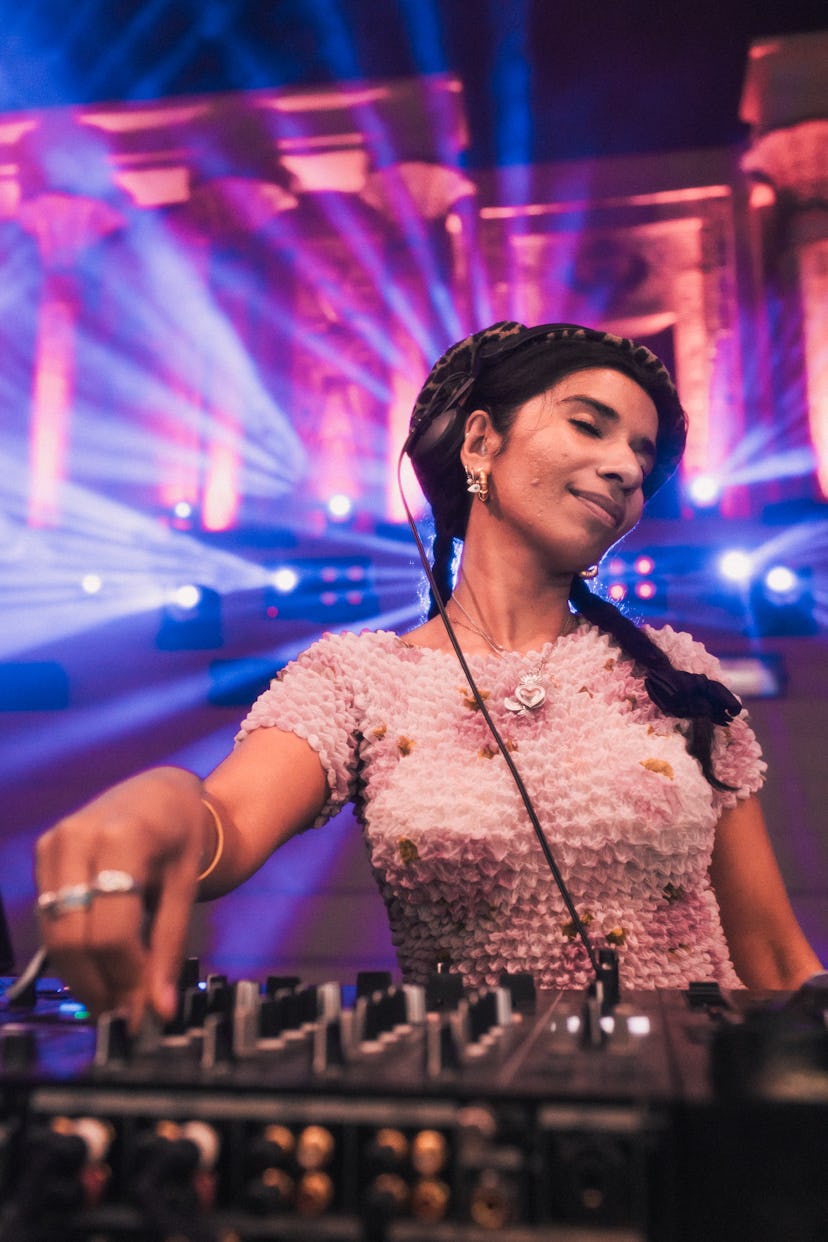Inside a Dance Music Festival Held at a Moroccan Movie Studio
This year’s Oasis: Into The Wild music festival was a testament to the increasing global appeal of dance music.

Atlas Studios, located in Ouarzazate, Morocco, has served as a shooting location for Game of Thrones, Gladiator, and Martin Scorsese’s Kundun. But at about 3 AM on a Sunday in October, it was home to a set by fashion’s favorite DJ Honey Dijon, who spun tracks near a street fashioned to look like Agrabah. A few hours earlier, German DJ Koze was playing a set in front of a recreation of the steps of Cleopatra’s palace. There were bar rooms that looked like opium dens or prison cells, a VIP lounge resembling an ancient Egyptian throne hall, and a space for yoga and meditation on a set built to look like a Nepali temple. The Mbari House, a cultural hub, showcased artist talks and the work of photographer Hassan Hajjaj, who’s shot stars like Billie Eilish and Cardi B. The effect was like a top-tier rave happening in a Universal Studios theme park after dark—except it was all happening on the African content. Welcome to the Oasis: Into The Wild music festival, an event that has helped redefine Morocco’s music scene since 2015, and keeps reinventing itself in the process. It’s both a testament to the increasing global appeal of dance music and the determination of one woman: festival co-founder and creative director Marjana Jaidi.
Born to a Moroccan father, she spent summers in the country but got a taste for nightlife Stateside. She first started going out in New York’s club scene, but had an aha moment while visiting Miami during the now-defunct Winter Music Conference, where dance music lovers from across the globe gathered to catch sets by top-tier DJs. If it worked in Miami, why not try it in Morocco?
“I was really emotionally affected by the Arab Spring. People were saying bad things about Morocco, and just making assumptions because it was an Arabic country,” she said during the most recent festival’s first night. “It made me think, if only people could come here, they would see what a great place it was.”
Oasis was launched in 2015 in the outskirts of Marrakech, but for the past few years has taken the show on the road to other parts of the country, which suits Jaidi’s vision of showcasing Morocco while also creating one-of-a-kind experiences (like this year’s bash in a movie studio). It’s also helped bolster the country’s own growing EDM scene. The bill featured local talent like Amine K, and Jaidi estimates about half of this year’s tickets were bought by Moroccan citizens. It’s a big change since the early days, when she said many locals were skeptical that the advertised acts would even show up in Morocco.
Yet some foreigners still harbor misconceptions about the country. For the record, alcohol is legal and the style among this year’s festivalgoers, like most other EDM festivals, featured more than enough mesh tops, body paint, and hot pants for all genders. This year, Jaidi also had to fend off outside criticism over continuing the festival after a massive earthquake hit the country in September. Although affected areas are still recovering, it didn’t shut down the country nor its tourism industry. “I thought it was important to send the message that Morocco is fit to receive people,” she says. “Sometimes people from the West can misinterpret what countries in this part of the world, especially Arab countries, really need.”
The success of Oasis has led to other festivals popping up in the country, which Jaidi sees as an opportunity to explore bigger horizons. She’d love to incorporate more hip-hop acts into the build (dream bookings include Kendrick Lamar and Tyler, The Creator), but even imagines bringing a pop-country artist like Kacey Musgraves.
In the meantime though, her dance bookings are providing more than enough reason to make the trek. In addition to Dijon and Koze, this year also featured Jyoty, Sofia Kourtesis, and Major Lazer member Walshy Fire. “Dance music is a pilgrimage, especially like the early rave scene in the U.K.,” she added. “People had to go far because it wasn’t legal. So it’s embedded in the dance music scene to travel.”